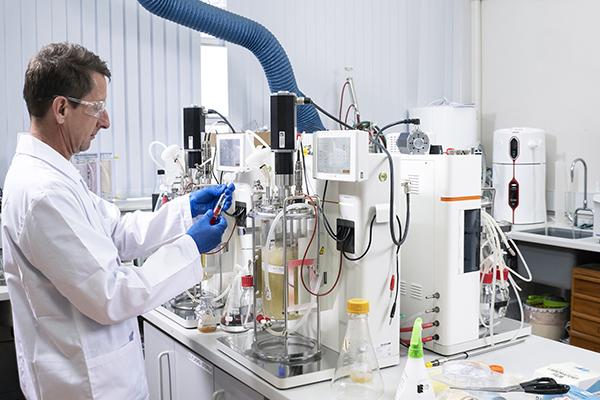Key Points
- An international team has identified the specific pathway in which cholesterol moves from the surface of the small intestine to the endoplasmic reticulum (ER) in cells
- The protein NPC1L1 was essential for bringing the Aster proteins to the cell surface
- Deuteration of cholesterol at ANSTO enabled imaging by nanoSims at Microscopy Austalia
ANSTO has contributed to a major study identifying a potential drug target for lowering blood cholesterol that has been published in the prestigious journal Science.
The international study was enabled by two of Australia's national research infrastructure facilities, the National Deuteration Facility and Microscopy Australia, both funded by NCRIS.
Cholesterol is a crucial part of cell membranes and is particularly important for the brain to function properly. It is also the precursor of vitamin D and all steroid hormones, such as oestrogen, testosterone and stress hormones.
Despite these positive effects, high blood cholesterol is linked to heart disease. Cholesterol can be made by the body but is also taken up from food in the small intestine.
It was already known that a protein called NPC1L1 on the surface of the small intestine cells is important in this process and is the target of the drug ezetimibe (EZ), which helps reduce cholesterol absorption.
However, it was not understood what happens after cholesterol binds to NPC1L1, which is the focus of this new study.
To visualise cholesterol in gut tissue, it is necessary to label it so it can be tracked.
Researchers in an international team led by Prof Peter Tontonoz from the University of California Los Angeles used the National Deuteration Facility to label cholesterol with deuterium, a heavier form of hydrogen. Deuterated cholesterol can be detected by the nanoSIMS instrument at the Microscopy Australia facility at the University of Western Australia (UWA).
The nanoSIMS images the sample by detecting the different versions of atoms at different positions in the sample. Sometimes, a unique atomic label is added to the sample so it can be seen as different from the surrounding atoms.
By using this approach, the team identified that key proteins called Asters are the link between NPC1L1 on the gut cell surface and the interior of the cell. The cholesterol is processed in a cellular compartment called the endoplasmic reticulum (ER) before being transported through the blood to the tissues.
Mice without Asters displayed signs of reduced cholesterol in the ER of cells, which affected cholesterol processing and the body's cholesterol synthesis program. These mice were protected from the effects of high cholesterol in their diet.
These findings suggest that the Aster pathway could be a target for developing drugs to reduce cholesterol absorption..

"The deuterated cholesterol in which hydrogen is replaced by deuterium in a bioreactor using yeast and heavy water (D2O) at the National Deuteration Facility was provided to this study and is proving to be highly useful in a range of health-related studies", said Dr Robert Russell, a co-author on the paper.
"The real power of deuteration is that it enables researchers to differentiate a molecule of interest from other related matter," said Dr Russell.
"We worked with our collaborator Prof Haibo Jang, who used the NanoSIMS instrument at the UWA to detect the deuterated cholesterol," he said.
"In this collaborative study, the NanoSIMS results with the deuterated cholesterol helped the team identify the specific pathway in which cholesterol moves from the surface of the small intestine into the cells for processing, a crucial finding to allow for the development of new cholesterol-lowering drugs." Dr Lisa Yen, CEO, Microscopy Australia.
"NanoSIMS instruments, especially in the hands of our expert staff, are extremely powerful tools for tracking and imaging isotopes and metabolites in a very wide range of samples across many disciplines from medicine to agriculture to geoscience," she said.
"The National Deuteration Facility plans to expand its suite of deuterated biomolecules using synthetic biology techniques for academic research and industry needs, beyond its traditional use in neutron scattering experiments. These activities have been supported by 2023 NCRIS Research Infrastructure Investment Plan (RIIP)", said Prof Tamim Darwish, NDF Director.
DOI: https://doi.org/10.1126/science.adf0966
Microscopy Australia assisted with the preparation of this content.







